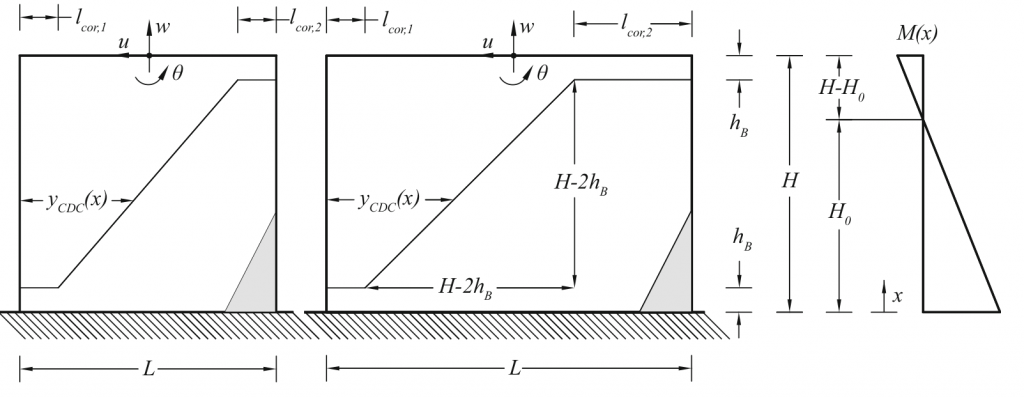Mechanical models for cyclic response of URM walls
One of the main research topics in our group is the development of mechanical/analytical models to compute the force-displacement response of unreinforced masonry walls under in-plane loadings. In this regard, Petry & Beyer developed a new mechanical model for the non-linear force–displacement response of URM walls developing a flexural rocking mode including their displacement capacity. It is assumed that only the compressed part of the wall contributes to the stiffness of the wall and therefore, the model accounts for a softening of the response due to the reduction of the effective area. Developed based on this work, Wilding & Beyer introduced the Critical Diagonal Crack model to compute the monotonic force-displacement response of walls failing in shear or flexure. Our developed mechanical models have been validated against the results of full-scale tests of unreinforced masonry walls under shear-compression loading. The presented formulations are capable of accurately predicting the effective stiffness, the maximum strength and the ultimate drift capacity of the tested walls.

- Article:
-
Force–displacement response of in-plane loaded unreinforced brick masonry walls: the Critical Diagonal Crack model [journal link]
-
Analytical and empirical models for predicting the drift capacity of modern unreinforced masonry walls [journal link]
- The effective stiffness of modern unreinforced masonry walls [journal link]
-
- Funding: Swiss National Science Foundation